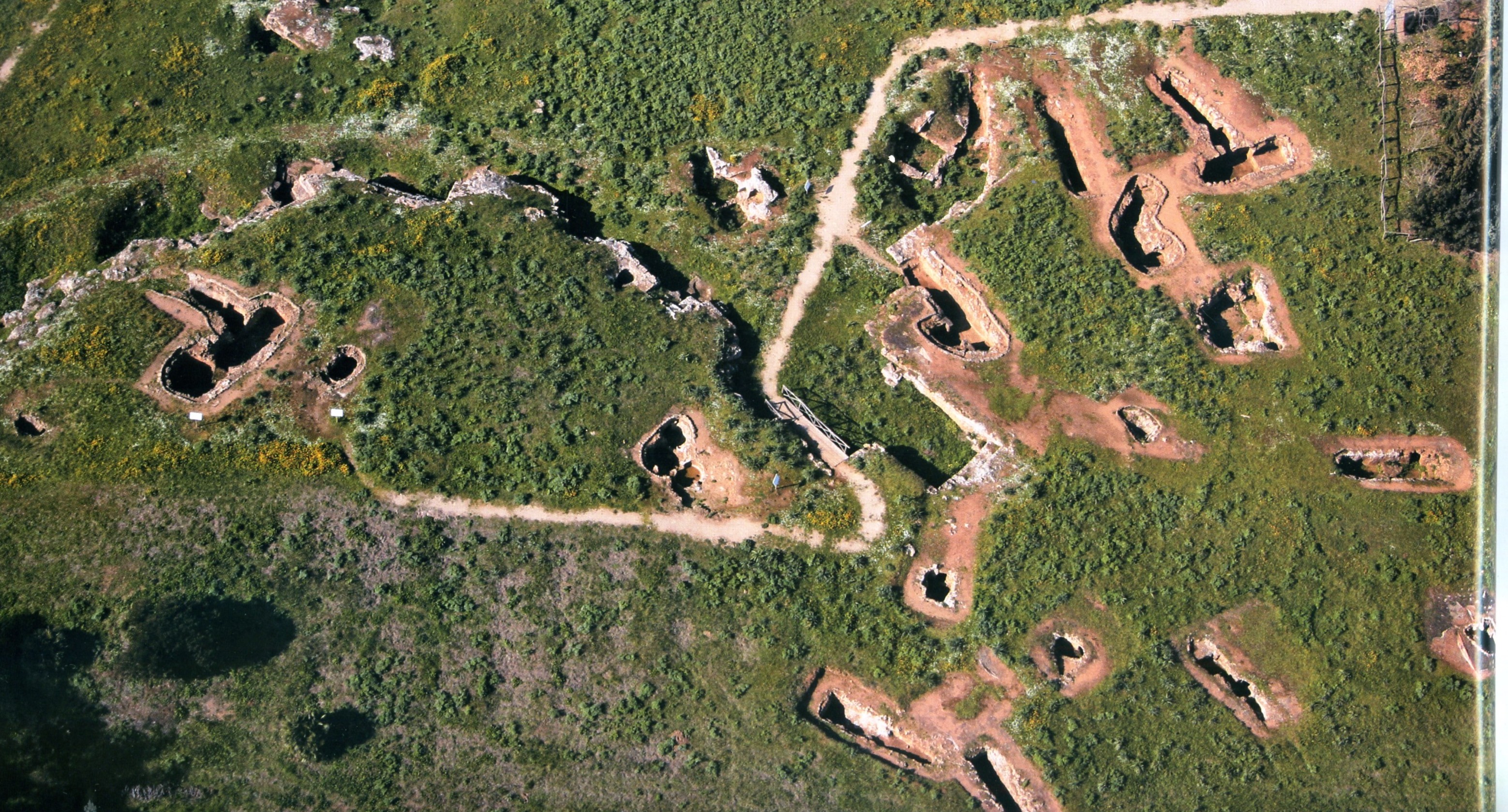Hypogeic Necropolis Of Anghelu Ruju 0 Comments

The Hypogeic Necropolis of Anghelu Ruju is a pre-Nuragic archaeological site nominated as a UNESCO World Heritage Site of the decorated Domus de Janas of Sardinia, 147 km far from the Gabbiano Azzurro Hotel & Suites, one hour and 50 minutes by car.
It is the largest necropolis in pre-Nuragic Sardinia. It was discovered by chance in 1903 during excavations in the area of the well-known Sella&Mosca winery and took its name from Angelo Ruju, owner of the estate where they were discovered. The discovery was important for many things, the main one being that it could be attributed to the Ozieri (or San Michele) Culture, dating back to 4000 BC. to 3300 BC, more than five thousand years ago.
It goes without saying why Alghero has nominated it as a UNESCO World Heritage Site: is the greatest prehistoric sepulchral expression in all of northern Sardinia. The Hypogeic Necropolis of Anghelu Ruju is in a beautiful valley situated north of the city, in the locality I Piani, at 9 kilometres from the sea, where digging into the sandstone, 38 tombs were found, of which only one is single-celled while the others are more complex and one of them has up to eleven rooms. This is Domus de Janas, the largest complex of prehistoric underground tombs in northern Sardinia, inside which even the ancient stone peaks used to excavate them were found.
The area occupies two zones: in the first there are 7 tombs, while in the second, on a small hill, there are 31 more. They have two types of entrance: a narrow "well" type, with an irregular plan and cells curved-lines, while other have a dromos, that is, with an open-air corridor, with steps at the entrance, which lead to hypogea (underground tombs) with a regular and rectilinear plan. They have decorations referring to the cult of the deceased: protomes (decorative elements depicting the head or part of the torso of humans, animalistic or fantastical figures) and bull horns, while false engraved doors indicate the entrance to the afterlife. In some parts the presence of red ochre represents life and rebirth after death. The necropolis was used for 1500 years; the vases, statuettes of the Mother goddess and parts of necklaces discovered there allow us to date the necropolis from the Recent Neolithic (which goes from 4200 to 3500 BC approximately), up to the Early Bronze Age (1800 BC).
The architecture, today decorated on the walls by moss, often uses details suggested by the homes of the living ones (steps, pillars, frames, false architraves, false doors, false windows, etc.). Inside, the deceased were buried with their belongings and female idols who were to accompany them on the journey to the afterlife. It has been proven by findings that the living ones consumed funeral meals inside the cells or at the entrances of the tombs, as if to establish an ever-present bond with their deceased. It is truly a mysterious and fascinating archaeological site, where respect for the cult of the dead is still perceived intact today.
“The study of antiquity must be able to let archaeological documents speak, from statues and triumphal arches to the humblest clay fragments, their eloquent language”. (Gaetano De Sanctis)
--Written by Daniela Toti
Share your opinion with us!